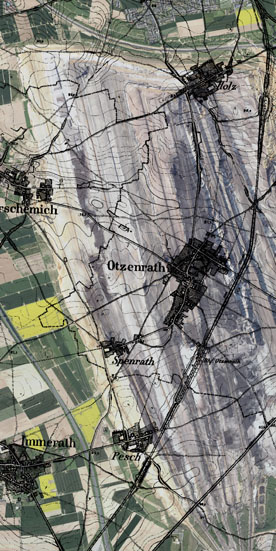Re-Location: Resettlement practices in brown coal mining areas

Since the beginning of the 20th century, more than 370 villages with about 120,000 total inhabitants have been relocated in Germany due to open-pit lignite mining. The planning of the relocations reflects, to a great extent, social, economic, and political change, as well as development in town planning and architectural concepts.
Generally, one can distinguish between four different concepts of applied relocation practices. In the former GDR, for example, it was common until the 1980s to resettle the inhabitants into new Plattenbau housing (“Kohleersatzwohnungen“: verbatim “coal substitution apartments”) on the edges of cities, e.g. in the new development areas of Cottbus, Senftenberg, or Hoyerswerda.
In the West German Rhineland, the concept of collective relocation was used since the 1950s. Back then, new villages were developed to be exemplary, and whose model architecture and car-friendly urban framework corresponded to the modern visions of the time.
Today, the concept of participation, which includes the resettlers in every step of the planning process, is a central element of collective, “socially responsible” relocations.
This research project explores relocation strategies due to surface coal mining in Lusatia and the Rhineland from the point of view of architecture and planning history. Relocation practices will be analysed in the context of social, political, and historical processes.
Through case studies of selected villages, the relocation concepts and the influence of the respective political, economic, and social conditions will be examined and a typology of relocation strategies will be developed.
This project collaborates with the Leibniz Institute for Research on Society and Space Erkner.
Researcher: Julia Ess
